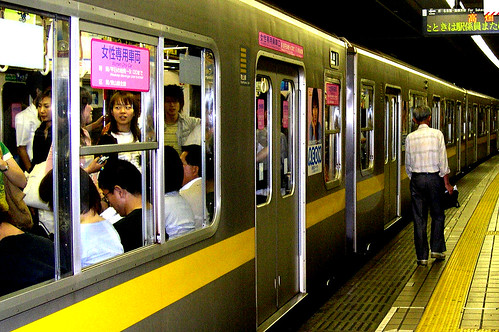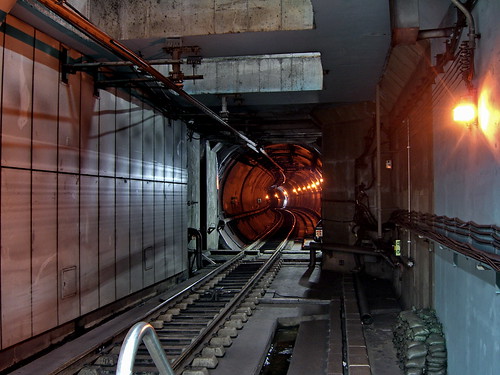Global Property Guide
London, New York and Moscow are the world’s most expensive cities for residential apartment buyers.
Residential apartments or flats in Prime Central London are among the priciest in the world, at US$21,800 to US$36,200 (£10,960 - £18,214 or €16,305 - €27,095) per sq. m. Prime central London include Belgravia, Chelsea, Mayfair, Notting Hill, Knightsbridge, Regent's Park, South Kensington, St. John's Woods, and St. James.
Prices in other luxurious areas in London such as Wimbledon, Hampstead, Richmond, and Wandsworth range from US$14,142 to US$19,361 (£8,675 - £9,719 or €10,560 - €14,458) per sq. m., also among the highest in the world.
New York comes in second place with property prices in Upper Manhattan between US$13,270 and US$22,923. Apartment prices in Lower Manhattan are around US$12,510 – US$20,456.
Moscow comes in third place with apartment prices ranging from US$10,764 to US$20,506.
Other cities in Europe that are among the top ten most expensive cities for condominium buyers are Paris, Barcelona and Geneva. Condominium prices in Paris are around US$12,930 to US$18,070 per sq. m.
In Spain, prices of flats in Barcelona are between US$9,160 and US$9,870. Prices of apartments in Madrid are lower than Barcelona, at US$6,535 – US$ 8,000.
In Switzerland, prices of flats in Geneva are around US$6,870 - US$10,400 per sq. m. Prices in Geneva are higher compared to Zurich, US$5,900 – US$9,830.
Of the three German cities included in the study, Munich is the most expensive with prices of flats at US$3,485 – US$3,700 per sq. m.; followed by Frankfurt at US$2,360 – US$3,300 per sq. m. Property prices in Berlin are still relatively subdued at US$1,840 – US$2,600 per sq. m.
Residential apartments in Istanbul, Turkey are among the cheapest in Europe at around US$1,850 to US$2,500 per sq. m.
Expensive Asia-Pacific cities
Four cities in the top ten are in Asia, Hong Kong, Tokyo, Singapore and Mumbai.
Residential apartment prices in Hong Kong range from US$10,490 to 14,780 per sq. m., in Tokyo from US$7,600 to US$11,870 per sq. m. and in Singapore from US$11,500 to US$13,340 per sq. m.
Mumbai is a notable exception among the ten most expensive cities; it is located in a poor country, albeit rapidly growing. A mix of high population density, archaic land laws, rapid urbanization and strong economic growth contributes to the surprisingly expensive property prices in Mumbai.
Property prices in Mumbai are around US$8,600 to US$10,300 per sq. m. This is significantly higher compared to New Delhi (prices at US$1,970 – US$3,260 per sq. m.) or Bangalore. Despite equally rapid economic expansion, property prices in Bangalore are still among the cheapest in the world at US$950 – US$1,900 per sq. m..
Compared to Mumbai, Chinese cities are significantly cheaper. Prices of flats in Shanghai are around US$2,870 to US$3,540 per sq. m. while those in Beijing are priced at US$2,100 to US$2,330 per sq. m.
Properties in Australia are near the top with apartment prices in Sydney at around US$6,290 to US$9,690 per sq. m. New Zealand is significantly cheaper compared to Australia, with apartment prices in Wellington at only US$4,360 – US$4,500 per sq. m.
In South East Asia, the price of a 120 sq. m. condo in Jakarta is around US$1,073 per sq. m., cheaper compared to Kuala Lumpur (1,400 per sq. m.), Manila (US$1,969 per sq. m.) and Bangkok (US$2,819 per sq. m.).
Americas and the Caribbean
In Canada, properties in Toronto are relatively more expensive than to those in Montreal. Apartment prices in Toronto range from US$4,600 to US$6,400 per sq. m. while condos in Montreal are priced at around US$3,660 – US$5,200.
In Costa Rica, one of the most favored places of American second-home buyers and baby boomers, flats in San Jose are relatively cheap at US$1,250 – US$2,440 per sq. m. Properties along the Pacific coasts in the provinces of Puntarenas and Guanacaste are relatively more expensive at US$2,120 – US$2,890 per sq. m.
Property prices in the Caribbean are generally at par with Western Europe. Prices of flats in Turks and Caicos Islands are around US$5,670 - 8,230 per sq. m.; in Bahamas at US$3,860 to US$5,680 per sq. m., in Cayman Islands at US$3,660 – US$8,265 per sq. m. and in Trinidad and Tobago at US$3,140 – US$3,170 per sq. m.
Middle East and Africa are inexpensive
Properties in the Middle East are among the cheapest in the world (see article here). For instance, residential apartment prices in Egypt are around US$400 to US$900 in Maadi district of Cairo. Properties in Zamalek are a bit higher than Maadi but are still affordable at US$700 – US$1,400 per sq. m.
Residential flats measuring 120 sq. m. in Beirut, Lebanon and Amman, Jordan cost around US$1,250 per sq. m.
Properties in Tel Aviv and Dubai are among the most expensive in the Middle East. Apartment prices in Tel Aviv are around US$4,560 – US$5,220 per sq. m. while those in Dubai range from US$3,590 – US$4,130 per sq. m.
In South Africa, the price of a 120 sq. m. 2BR flat in Cape Town is around US$2,784 per sq. m., around twice the prices of similar sized properties in Johannesburg, US$1,376 per sq. m.
Renters
London, Moscow and New York are also the most expensive cities for renters. The monthly rent for a 120 sq. m. apartment in prime central London is around US$13,000. In other luxurious areas in London, the monthly rent is around US$7,900 for a similar sized unit.
The rent for 120 sq. m. flats in Moscow and New York are around US$8,000 per month.
Tokyo, Paris and Hong Kong are the next three most expensive cities for renters at around US$5300 – US$5,600 per month for a 120 sq. m. unit.
Other cities in the top ten are Sydney, Australia (US$4,145 per month for a 120 sq. m. unit), Geneva, Switzerland (US$3,600), St. Petersburg, Russia (US$3,400) and Mumbai, India (US$3,380).
Cairo, Egypt has one of the lowest rents at around US$455 per month for a 150 sq. m. unit apartment. Beirut, Lebanon and San Jose, Costa Rica also have cheap rents at around US$1,150 per month for similar sized units.































































